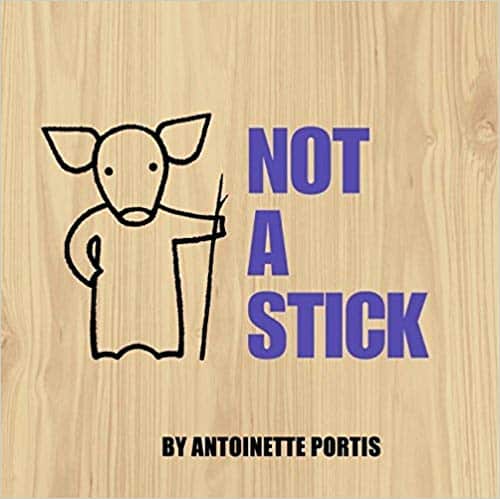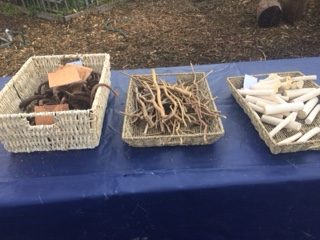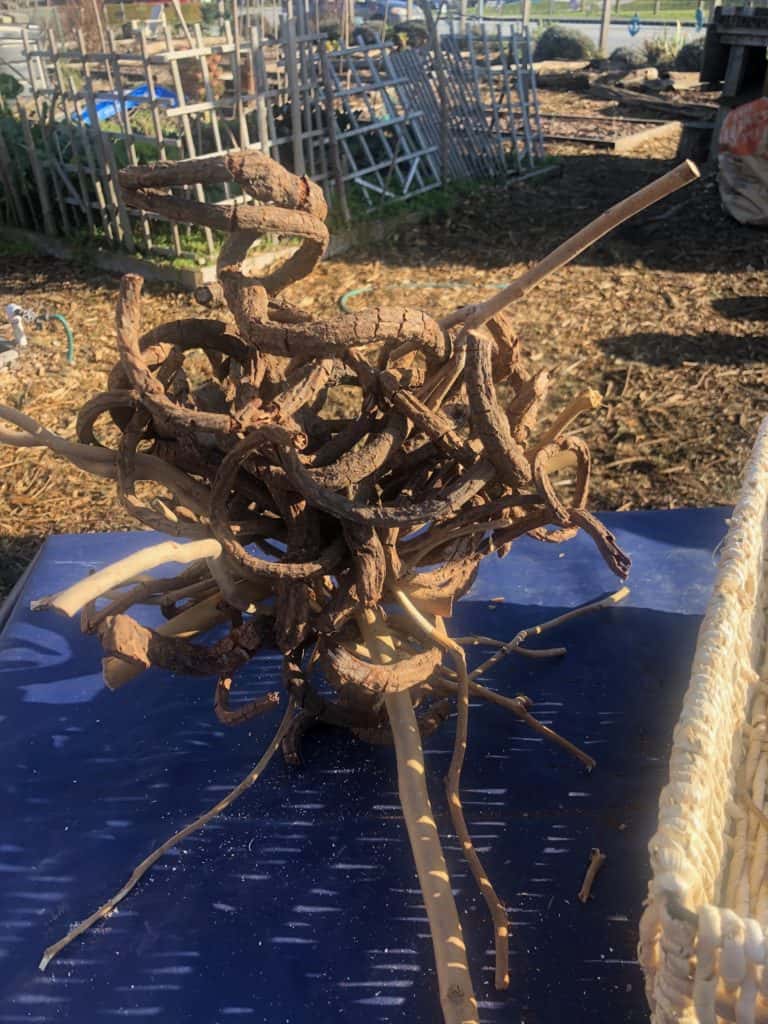- filed under: Book Recommendations, Loose Parts, Playful Learning Outdoors
Not a Stick: Ordinary Objects Inspire Free Thinking
Thank you to Rene Gualtieri for contributions to this post!
Not A Stick Play
Having worked at a nature camp, I am very aware of the hesitation towards allowing children to pick up and play with sticks. It was a concern raised by parents and staff alike due to potential injury. This was always a concern for me as a camp councillor because saying no to sticks did two things: Firstly, it taught students to reject a part of nature, and was then seen as something bad.
Secondly, saying no limited the opportunity for creative exploration of one of natures’ most versatile loose parts. Sticks can be used for so many beneficial activities that shape a child’s learning and identity development: building animal shelters, searching through leaf litter for insects, nature mandalas, crafts, math manipulatives, storytelling, playing pretend, games and so much more!
Saying Yes!
Saying yes allows students to take an ordinary stick and turn it into something meaningful to them using their imaginations. With the addition of a simple stick, a child can become anything they want: a wizard, a conductor or a painter all on their own terms.
In some cases, students who have a hard time with imaginative play (particularly with sticks), have been told NO to playing with them in the past. To help get the imaginative and magical thinking started, books can support and scaffold an activity that seems unfamiliar.
Not A Stick
Today in the outdoor classroom, Mrs. Zeni read Not A Stick by Antoinette Portis. After a mini brainstorm session, the students tested out their theories and ideas on tables with an assortment of collected sticks. Some students stayed at the table to build structures and worked together. Others strayed away from the table, found their own sticks, and pretended to be wizards making potions, for example.
Not a Stick allows for students to get back to simpler forms of play while also tapping into the complex and whimsical world of their individual imaginations.
Sticks of varying shapes and sizes add to the imaginative potential of this activity. This bowl of spaghetti with a serving fork was served up by a student in the outdoor classroom!
Sticks and Risky Play
Stick play can veer easily into weaponized play. Children must be coached on consent, and all players must agree to the sort of rough play that emerges when sticks are weaponized in play.
That said, when given the opportunity for imaginative play with sticks, children can choose to create fantasy worlds that deeply resonate with their own experiences while working through unresolved conflicts from their real lives. Stick play that becomes sword or other weapon play gives children an opportunity to experiment with power, control, and the emotional importance of consent.
RELATED POST: BEST BOOKS FOR LOOSE PARTS PLAY
Learn More
Come join me on Pinterest for more ideas and the collective wisdom of play experts from around the world!



